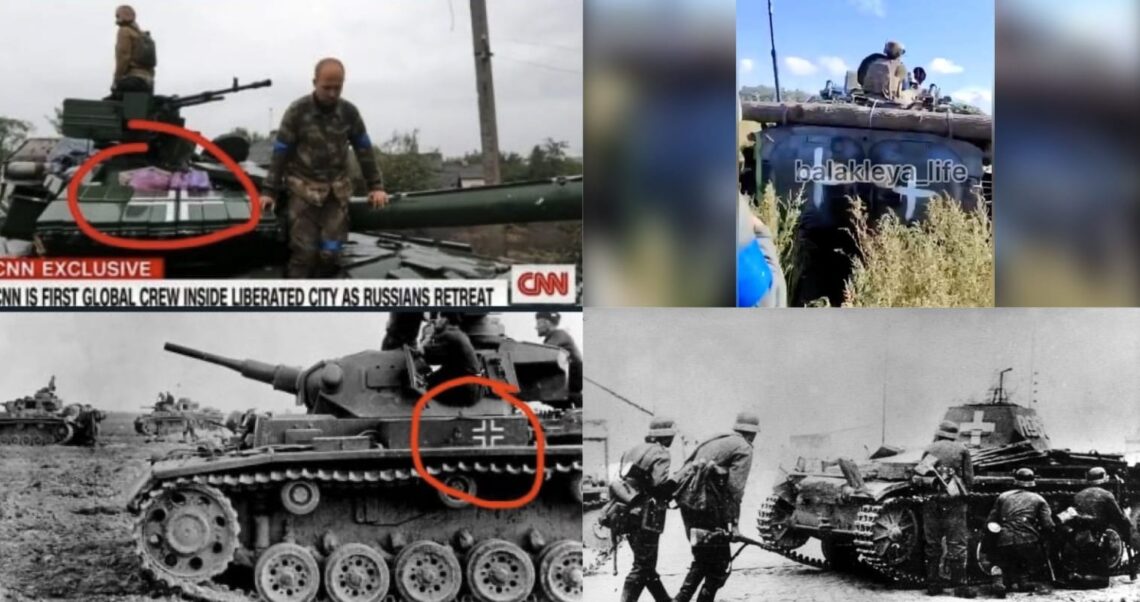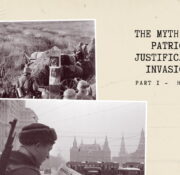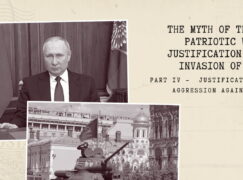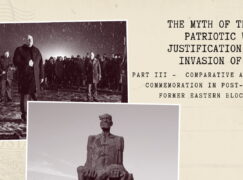According to information circulating on social media, the white crosses painted on Ukrainian military vehicles are a reference to the Nazi tank markings during World War II. The narrative is intended to arouse resentment towards the Ukrainian army and is in line with the propaganda promoted by the Kremlin for years that Kyiv is ruled by the Nazis. However, there is no evidence for such claims, and the analysis indicates that the markings may have a deeper, historical meaning. However, as Ukrainians themselves admitted, there were in fact sporadic cases of using the so-called Balkenkreuz. This is also confirmed by photos and recordings from the battlefield. Let’s take a look at the difference between the two crosses.

Lack of evidence
More about our rating system:The narrative about Nazi inspirations in the marking of vehicles was promoted particularly eagerly by accounts known for spreading pro-Russian propaganda. One of the examples is the Olej w Głowie account on Telegram. Similar content can also be found on Twitter both in Polish and in English.
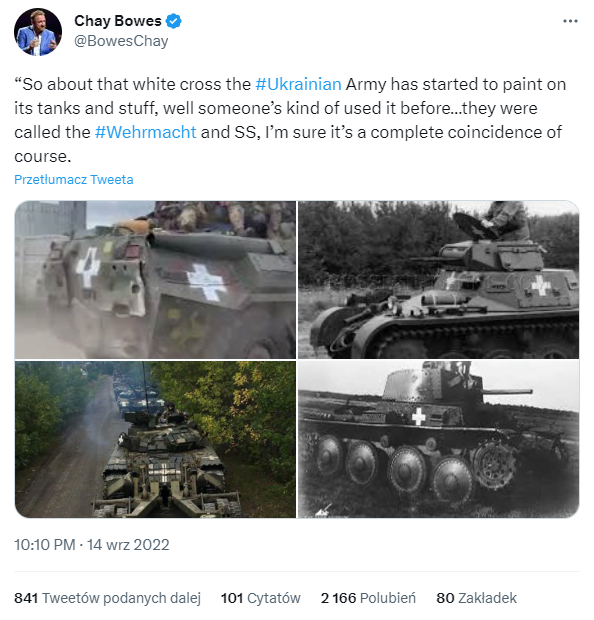
Symbolism of the isosceles cross in Ukraine
The key part of the above issue is that white isosceles cross is an important symbol for Ukrainians. This is where the answer to the mystery of why the headquarters of the Armed Forces of Ukraine decided to use this symbol may be hidden. There is no evidence that Ukrainian white crosses are derived from the Wehrmacht markings.
Logistics and pragmatism
At the very beginning, it is worth noting that even if there is a deeper meaning behind this symbol, this shape was most probably chosen over some other ones due to logistics reasons. The isosceles cross is a very simple shape to paint and does not require much effort. White paint is generally available and therefore large quantities can be easily and quickly arranged. This sign also enables instant and easy identification of vehicles, which is crucial during offensive actions and beyond. It is also sufficiently different from Russian markings (“V”, “Z”, “O”), which means it would be difficult to confuse them. During the war, pragmatism is extremely important, so this may be the main reason for choosing this mark by the Armed Forces of Ukraine.
Historical Meaning
The isosceles cross is an important part of the symbolism of the Ukrainian state, and it dates back to Cossack times. It was part of the coat of arms of the founder of the first Cossack Sich, Dmytro Vyshnevetsky, also known as Baida. It was located on the flag of the Zaporozhian Sich in the form of a white isosceles cross, the arms of which widen at the ends.
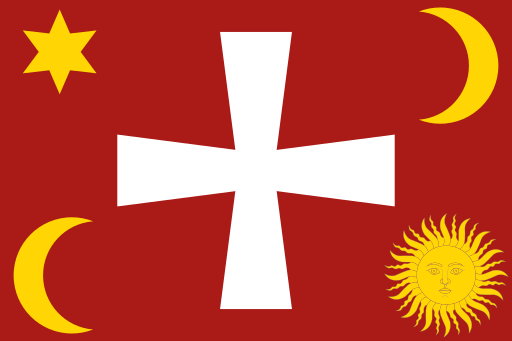
A very similar cross can also be seen on the Cossack flag from the mid-seventeenth century. It was captured by hetman Janusz Radziwiłł in 1651.
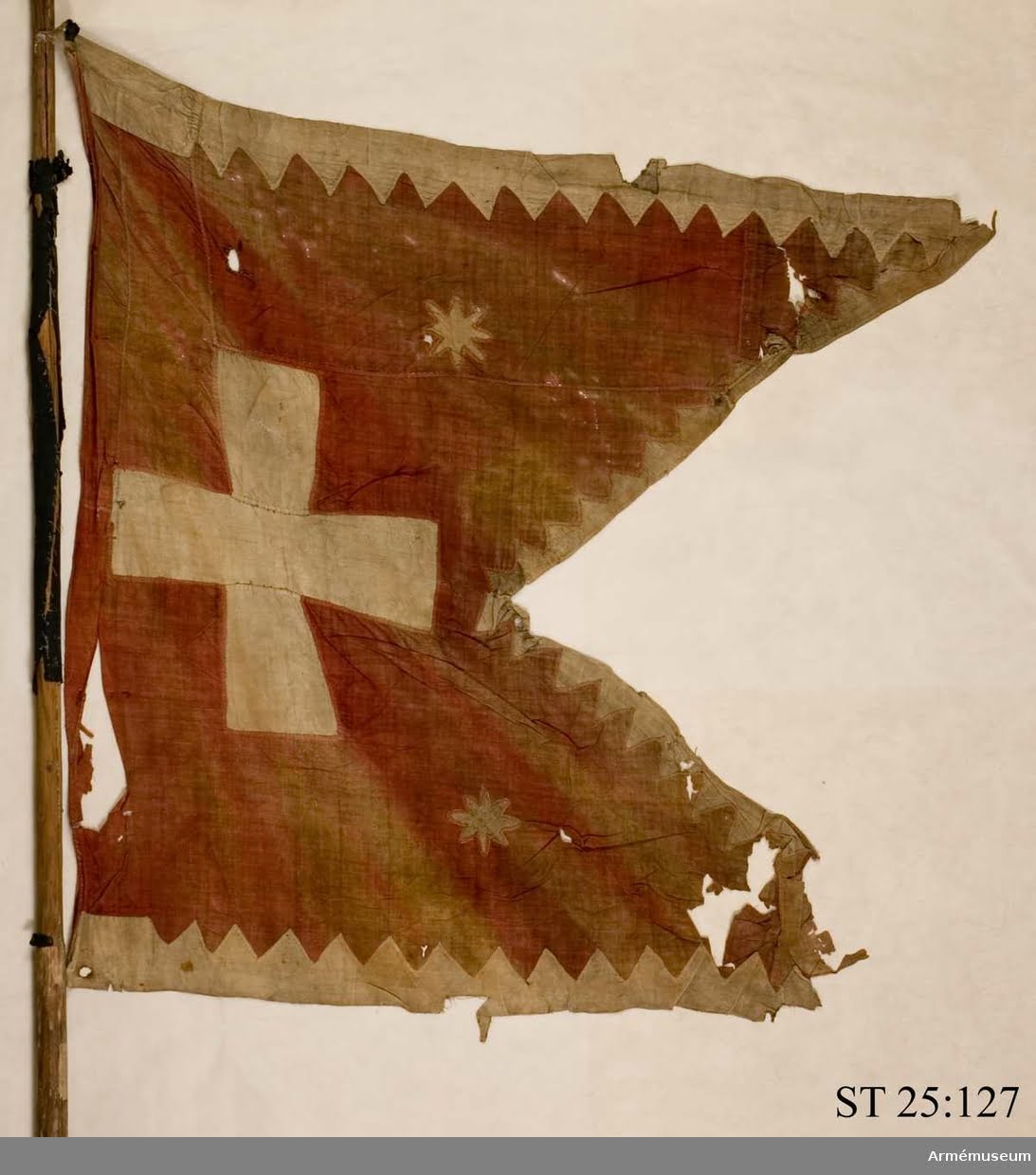
The isosceles cross was also a part of the decoration received by soldiers of the Ukrainian People’s Republic for their participation in the First Winter Campaign at the turn of 1919 and 1920. It took place under the command of Mykhailo Omelianovych-Pavlenko, and its purpose was to move behind the Red Army lines to start guerrilla operations there. The troops were successful, and the whole operation is an important event in Ukraine’s history. Here you can see what the mentioned decoration looks like.
Cossack cross in the emblems of Ukrainian institutions
The isosceles cross is also widely used in the symbols of various institutions on the territory of Ukraine. The Cossack cross (isosceles with expanding arms at the ends) is used, among others, in the coat of arms of the Ministry of Defence of Ukraine, the Armed Forces, the Infantry, the Navy and the Air Forces. Therefore, it clearly has strong connections with military symbolism. Thence, it should come as no surprise that its simplified version is placed on vehicles belonging to the Armed Forces of Ukraine.
Wehrmacht vehicle designations
It should be noted here that the narrative about white crosses spread on Telegram does not refer exactly to the cross presented by the Russian embassy (Balkenkreuz). For this reason, we will discuss when German troops used specific designations, as well as the historical context of the photos from World War II.
White crosses
As explained earlier, it is doubtful that Ukrainian troops used the white cross in reference to the markings on German tanks. Most probably, the connection is unintentional. What is more, the Wehrmacht used this sign for a very short time, and this fact is not widely known, unlike the Balkenkreuz, which is unequivocally associated with the Wehrmacht. There are numerous indications that the white cross was used because of historical connotations that go much deeper than World War II, which we discuss below. Claims about the alleged Nazi roots of the symbol coincide with the propaganda narratives created by the Kremlin.
In the post on Telegram, shared by the Olej w Głowie profile, we can see a photo of a German tank with troops taking cover behind it. According to the author of the post, the photo comes from the Great Patriotic War.
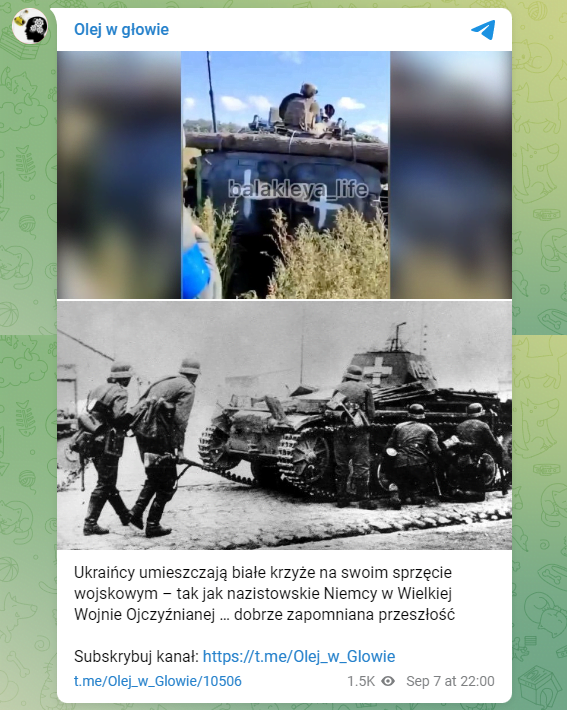
However, this is not true. The photograph was taken during the fights in Warsaw in September 1939. It features Wehrmacht soldiers using the Panzerkampfwagen II tank as cover. Plain white crosses were painted on German vehicles only during the execution of the Fall Weiss plan (Eng. Case White), i.e. the invasion of Poland by the Third Reich. Below we also present another example of its use in September 1939. In the later stages of the war, German infantry began to use the Balkenkreuz instead of the single-coloured white cross. This can be seen in the second photograph below, which dates back to the invasion of France in May 1940 (the Fall Gelb plan, i.e. Case Yellow).

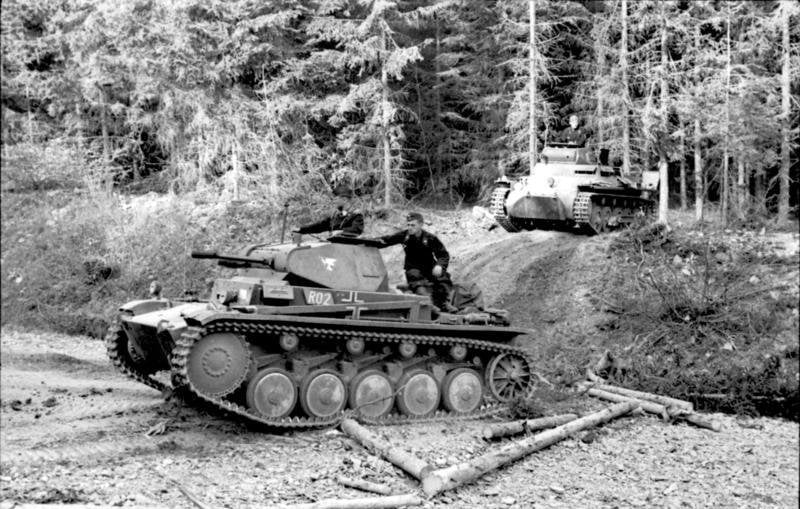
Great Patriotic War
The term Great Patriotic War, which is used to spread the discussed narratives, refers to the war between the Third Reich and the USSR (from June 1941 through May 1945). It is used primarily by Russian historiography and has a strong propaganda dimension. This would indicate that the content spread is linked to Kremlin propaganda.
The term Great Patriotic War was coined by Soviet propaganda on the basis of the term used in reference to Napoleon’s invasion of Russia in 1812 (Patriotic War). This was thoroughly explained by dr hab. Grzegorz Berendt, associate professor at the University of Gdańsk and the Head of the Museum of the Second World War in Gdańsk, in his interview for Wprost magazine:
“Outside of Russia, it is widely accepted in historiography that the Second World War began in September 1939, with the German attack on Poland. This date is not convenient in the Russian historical narrative, because on September 17 the Soviets joined the invasion of Poland. Thus, the aggression of the Third Reich against the Soviet Union, initiated on June 22, 1941, was used instead. The term Great Patriotic War was coined by Soviet propaganda in an attempt to unite this oppressed nation – or more precisely, this multinational society – under one banner, i.e. the “homeland” slogan. With the love of the homeland they wanted to cover the memory of the crimes committed by the Bolsheviks on their compatriots from the Autumn of 1917 until the Summer of 1941, and at the same time to ease national tensions.”

Mostly true
More about our rating system:The Russian Embassy and Balkenkreuz
The entire narrative about the Wehrmacht crosses was generated by the Russian embassy in the United Kingdom. It posted a tweet with a photo from World War II. Most likely, it comes from Operation Barbarossa, i.e. the Third Reich’s invasion of the USSR. It shows the Panzerkampfwagen III tank with the crew sitting on it. In the tweet, it was juxtaposed with a photograph of a Ukrainian tank. In fact, the marking on it resembles that on the German vehicle.
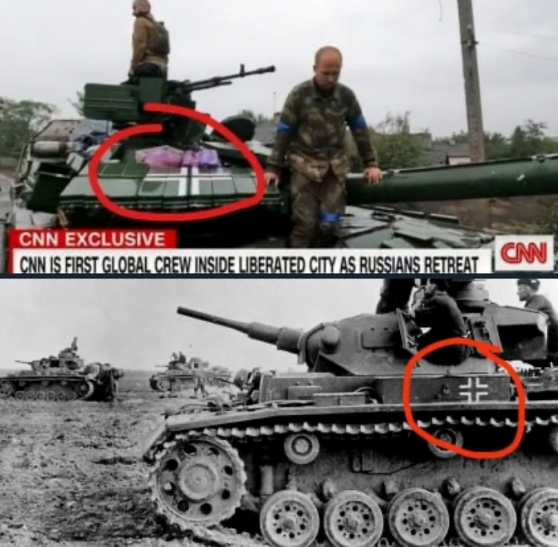
This cross appeared in several different versions, and it was modelled on the Luftwaffe emblems. Its most famous form is a black isosceles cross with a white outline, not overlapping at its ends. It was this version of the marking, and not the plain white one, that was used during Operation Barbarossa (invasion of the USSR) and in the later stages of the war. An example can be seen in the photo below.
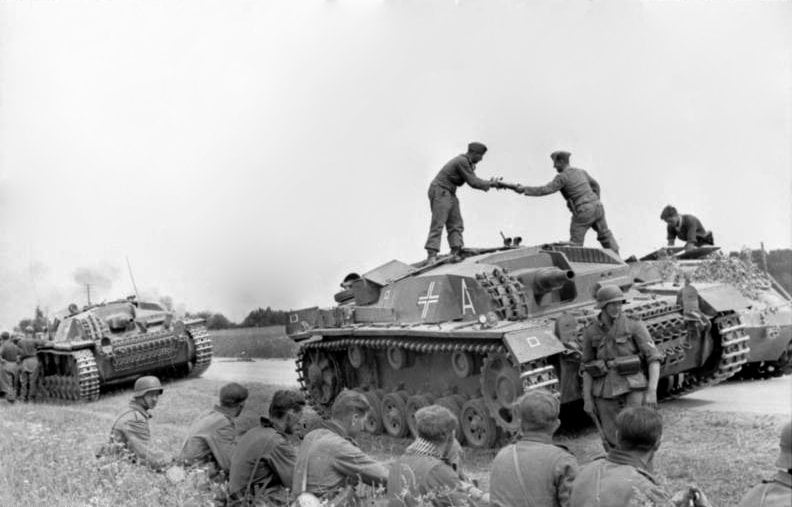
However, looking at the cross on the Ukrainian tank, it is worth paying attention to the surface it is located on. It is not painted on uniform material, but on bricks of a reactive armour. There are clear gaps between them, which makes it impossible to paint a uniform marking. On other surfaces, the cross is plain white, without any ornaments. Seeing the Balkenkreuz on the vehicles of the Ukrainian armed forces requires a lot of ill will and can be seen as an attempt to discredit the troops of our eastern neighbour. The following photo perfectly shows how the surface impacts the appearance of the cross.
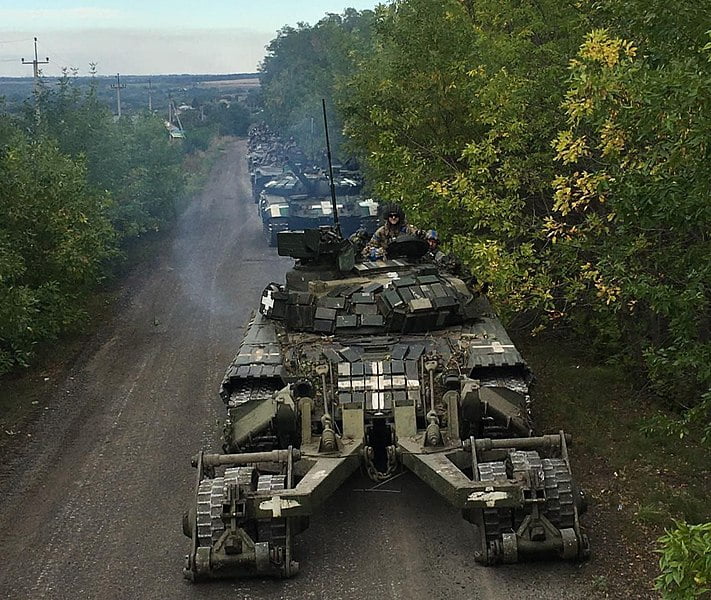
Cases of using Balkenkreuz by Ukrainians
Unfortunately, in several other cases, the fact of observing Balkenkreuz cannot be blamed solely on bad will or misinterpretation of the photographs. While the tweet published by the Russian embassy is an evident manipulation, in other cases it is difficult to find another explanation. At least a dozen photographs and videos of Ukrainian military vehicles with Wehrmacht crosses painted on them have been circulating on social media.
Selected examples can be found below:
- Captured BMP-3, which can be seen in several photos and videos;
- BTR-82A, also captured from the Russians;
- T-72 tank;
- 2S7 Pion self-propelled cannon.
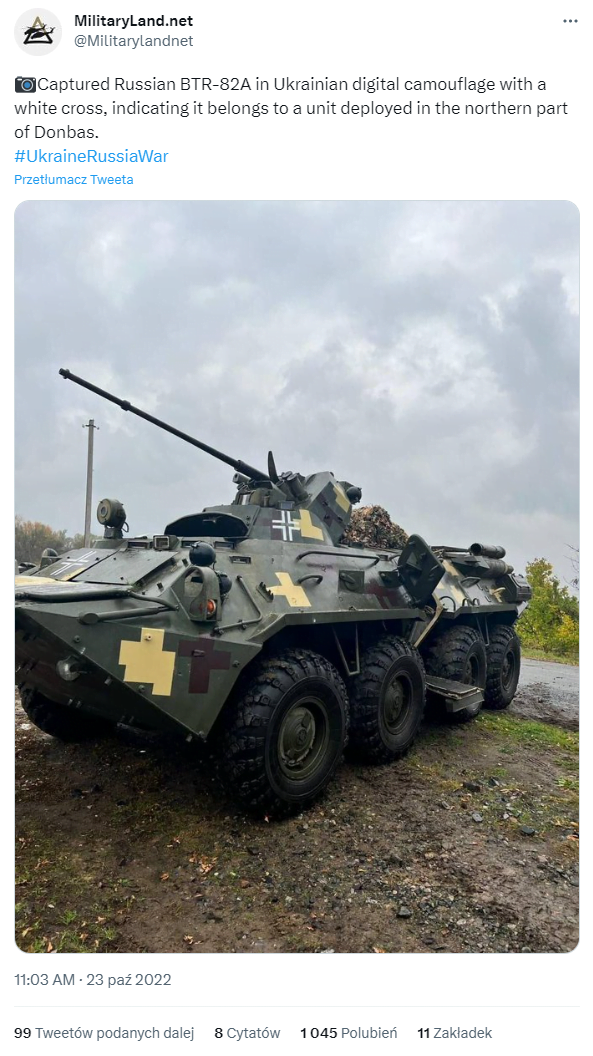
It should be noted here again that the majority of materials depicting Balkenkreuz on Ukrainian vehicles emerged after the original publication of this article. At the time of its writing (second half of September 2022), accusations of painting the Wehrmacht’s cross actually came only from manipulated messages generated by Russian centres of influence. It is possible that the placing of this mark was a response to Kremlin propaganda and a form of trolling by the Ukrainians.
Ukrainian command’s response
In February 2023, a Reuters photographer took two photos of Ukrainian tanks with Balkenkreuz during military exercises. The symbols are clearly visible and unambiguous. The Ukrainians did use the Wehrmacht cross on their vehicles. The Czech portal Novinky sent an inquiry to the Ukrainian armed forces regarding the incident. After conducting the investigation, the Ukrainians pointed out that the situation did actually take place and it was an individual initiative of one soldier. He was then ordered to remove the non-regulatory markings from the vehicle.
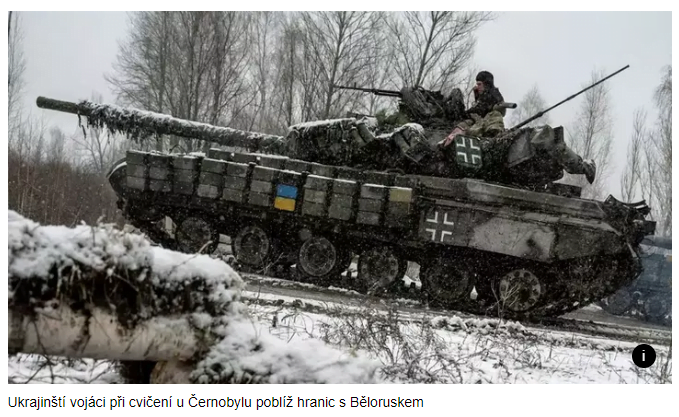
However, it is not known if any similar actions were taken in other cases. It seems that the Ukrainian commanders turned a blind eye to the painting of Balkenkreuz by their soldiers. The fact is, however, that most of these photos come from autumn 2022 and winter 2022/23. In the following months, photographs showing Wehrmacht crosses on Ukrainian vehicles were published sporadically. However, we are unable to determine whether the Ukrainian command has taken any formal actions in this matter. The whole situation was also criticised in Ukraine itself, where calls were made for unequivocal condemnation of the use of symbols associated with Nazism.
Nazi symbolism in armies throughout the world
However, it should be noted that scandals related to the use of Nazi symbols by soldiers have broken out many times in the past in the armed forces around the world. The insignia used by the Wehrmacht and the Waffen-SS are associated with strength and an effective war machine. That is why they are eagerly used in the military to distinguish troops or individual soldiers. The use of this type of designation does not necessarily indicate that a person has Nazi views, but it does not change the fact that the use of this type of symbols should be unequivocally condemned.
A scandal of this type broke out, among others, in the US Army in 2012, when USMC soldiers posed for a photo with the SS symbol (the double-sig rune). In 2017, items with Nazi emblems were found in the Bundeswehr barracks. The German army has struggled with similar events many times in the last decade. In 2018, a scandal broke out in Australia when journalists came across a photo from 2007, which shows a large flag of the Third Reich placed on an Australian army vehicle. What all the above events have in common is the unambiguous and decisive reaction of the authorities of individual countries, which, after carrying out investigations, drew consequences against those responsible.

However, there is a country that does not react in any way to the use of Nazi symbols among its soldiers. The Russian military repeatedly presented authoritarian symbols. In April 2022, a fighter of the so-called Donetsk People’s Republic received a medal wearing Nazi emblems on his uniform. On 21 April 2022, Russian soldiers celebrated Hitler’s birthday. In May this year, they attended a concert by a neo-Nazi band.
Members of the Sabotage Assault Reconnaissance Group (DShRG) “Rusich” clearly refer to Nazi symbolism and ideology. Fighters of this unit are accused of numerous war crimes in Ukraine and Syria. The founder and commander of the group, Alexei Mikhalkov, identifies himself as a Nazi. The Russian authorities do not react to incidents involving Nazi symbolism in any way, and on top of that they finance and donate weapons to radical paramilitary groups.
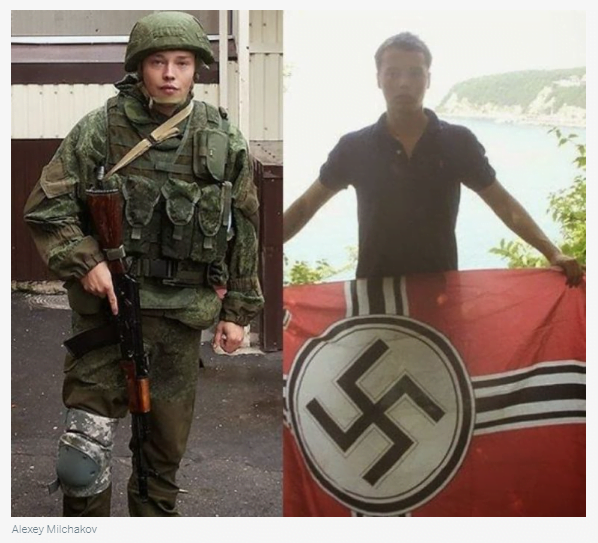
Summary
The isosceles cross has a long tradition of use in Ukrainian army, dating back to Cossack times. Therefore, it is not particularly surprising that for this reason, as well as out of pure pragmatism, this marking was used by the Ukrainians during the Kharkiv offensive. This sign does not originate from Nazi symbolism.
However, there is irrefutable evidence that Ukrainian soldiers painted Balkenkreuz on their vehicles. Individual soldiers did this out of their own initiative, and situations of this type do not seem to be frequent. In one case, the Ukrainian command strongly reacted to such an event. There are fewer and fewer new photos portraying the use of Balkenkreuz, but the reasons for this remain unknown. Perhaps due to the controversy, the Ukrainian command decided to take steps to improve the situation.
Sources
Internet Encyclopedia of Ukraine: http://www.encyclopediaofukraine.com/display.asp?linkpath=pages%5CZ%5CA%5CZaporizhiaThe.htm oraz http://www.encyclopediaofukraine.com/display.asp?linkpath=pages%5CW%5CI%5CWintercampaigns.htm
The New York Times: https://www.nytimes.com/2016/11/10/arts/design/museum-of-the-second-world-war-in-poland-debate.html
Wprost: https://historia.wprost.pl/10711834/czym-jest-wielka-wojna-ojczyzniana-prof-berendt-tlumaczy.html
Photos
Bundesarchiv, Bild 146-1976-071-36 / CC-BY-SA 3.0
Bundesarchiv, Bild 101I-382-0248-33A / Böcker / CC-BY-SA 3.0
Bundesarchiv, Bild 101I-009-0882-04 / Schröter / CC-BY-SA 3.0
Mil.gov.ua / CC 4.0
commons.wikimedia.org / CC 3.0
Armémuseum / CC 4.0
